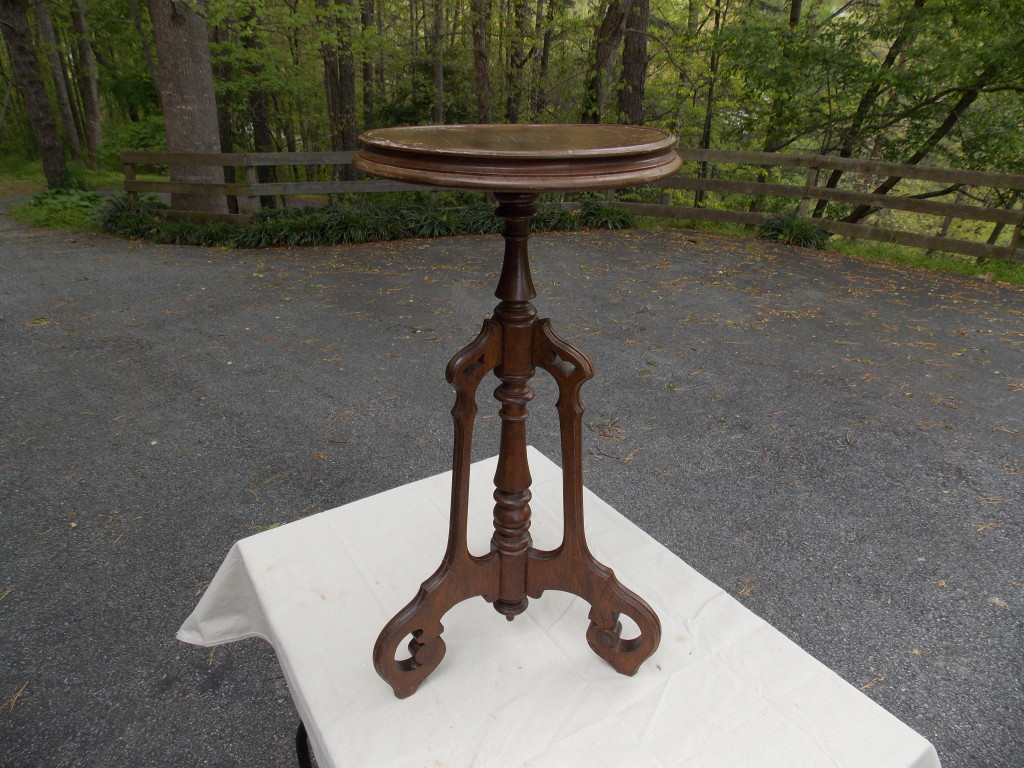
As I hope you saw in my earlier blog, I found this 1890s walnut Victorian plant stand at a local flea market priced at just $30. After cleaning off the dirt and re-gluing one loose leg, I am now ready to touch up the scratches and give the old finish some badly needed protection. If this looks like a project you might want to undertake, you can read more about what I am going to do right here.
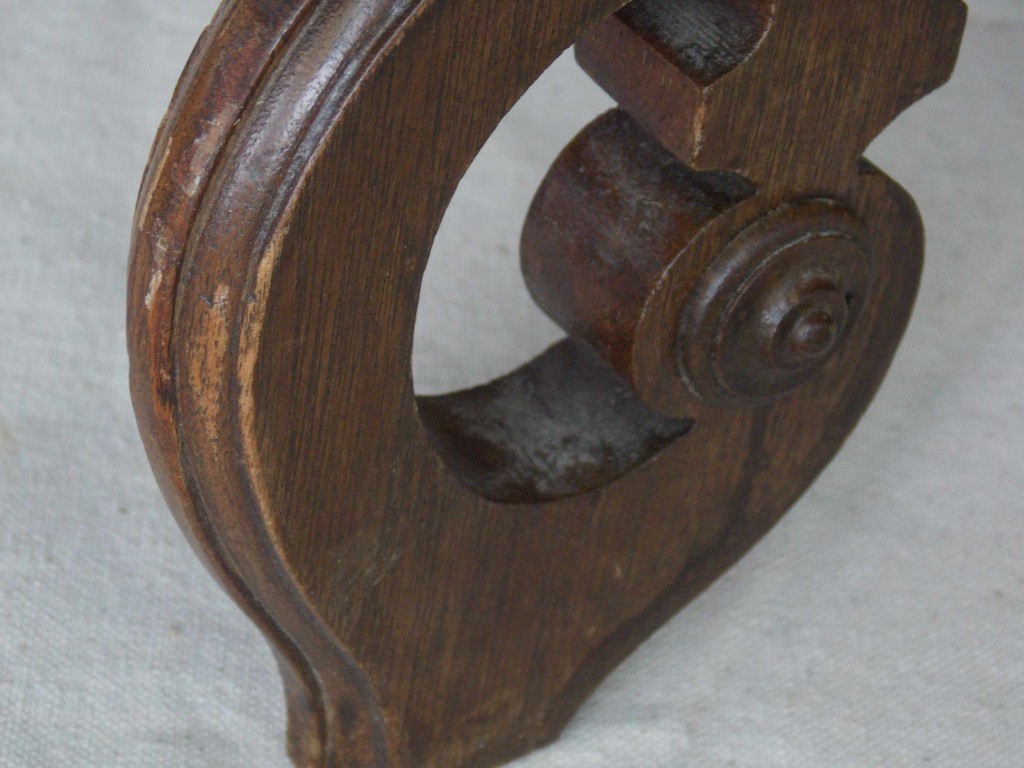
The finish on my walnut plant stand is still intact, but it is getting old and needs some attention in order to continue protecting the wood beneath it. The first thing I am going to do is tackle these shallow, unsightly scratches in the finish.
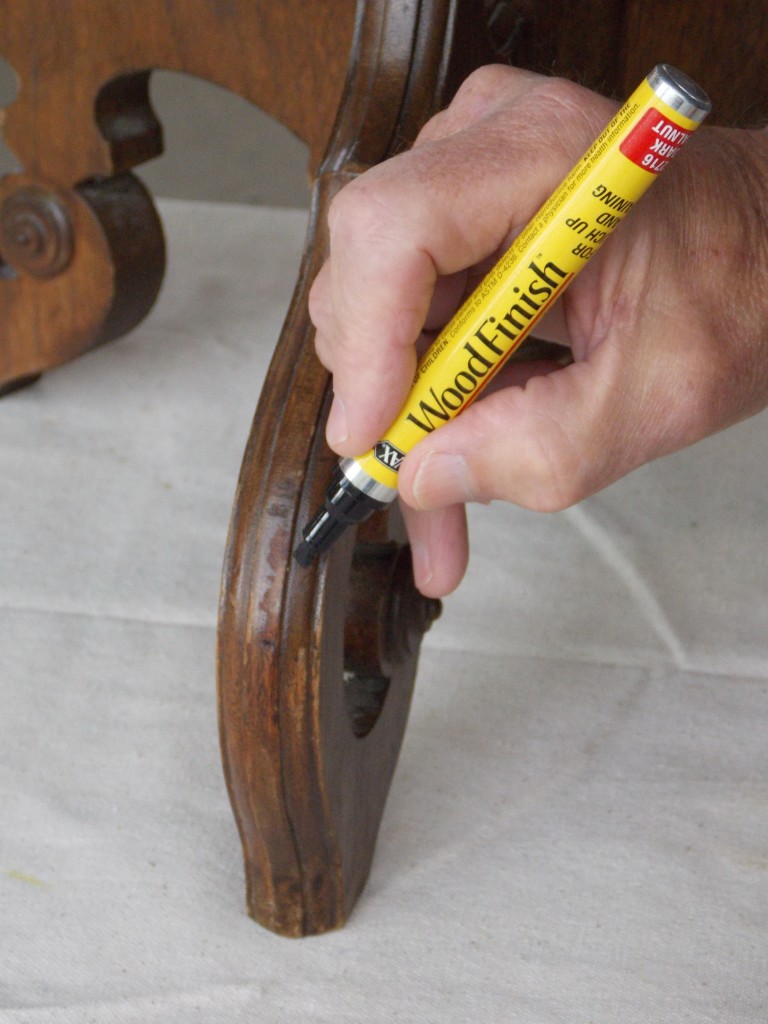
Back when my grandmother was teaching me how to refinish antiques in her backyard, we would have had to open a can of wood stain to blend in these scratches. Today, however, we have Minwax® Wood Finish™ Stain Markers: felt-tipped markers that contain real Minwax® Wood Finish™ Stain. You simply pick the color that matches your wood, apply the stain to the scratch, then wipe off any excess with a clean cloth or paper towel.
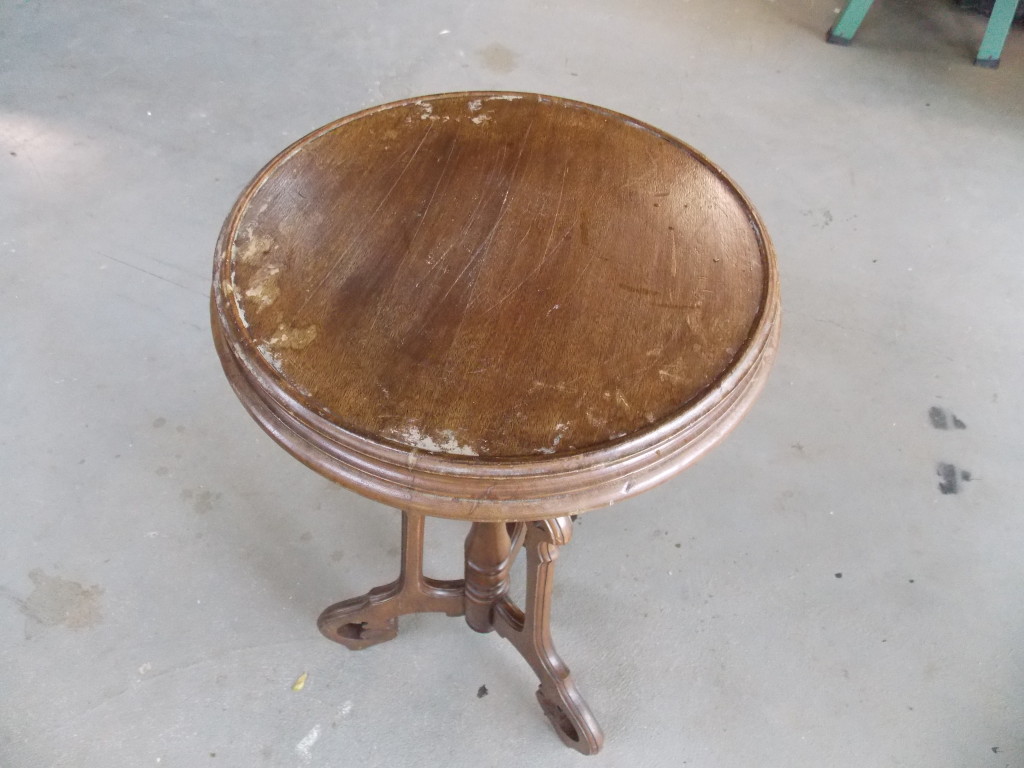
A clear finish is supposed to enhance the beauty of the wood and protect it. The old finish on my walnut plant stand has lost its luster and its ability to repel liquids, such as wet glasses set on top of it. After first cleaning it with Minwax® Wood Cabinet Cleaner, I could now see that the old finish did not have to be stripped or sanded off, but did need some reinforcements.
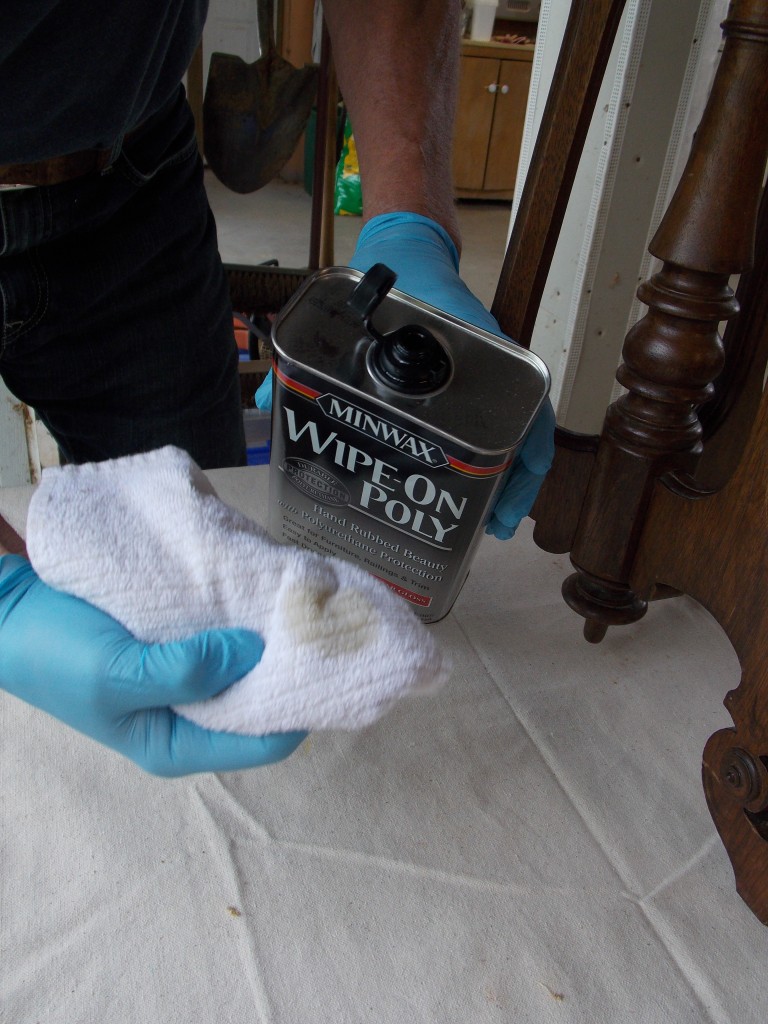
From the moment I first spotted it at the flea market, I knew this would be the perfect project for one of my favorite finishes: Minwax® Wipe-On Poly. As its name implies, this clear polyurethane finish is applied with a cloth rather than a brush. After shaking the container thoroughly, you simply pour Wipe-On Poly onto a soft, clean lint-free cloth and begin rubbing it onto the wood.

Since both the oil-based and the water-based versions of Minwax® Wipe-On Poly are applied with a cloth, you won’t have to worry about any runs, drips or brush marks. And since it contains polyurethane, you get protection along with a durable, hand-rubbed finish, the perfect combination for any antique you want to stand up to a modern day lifestyle.
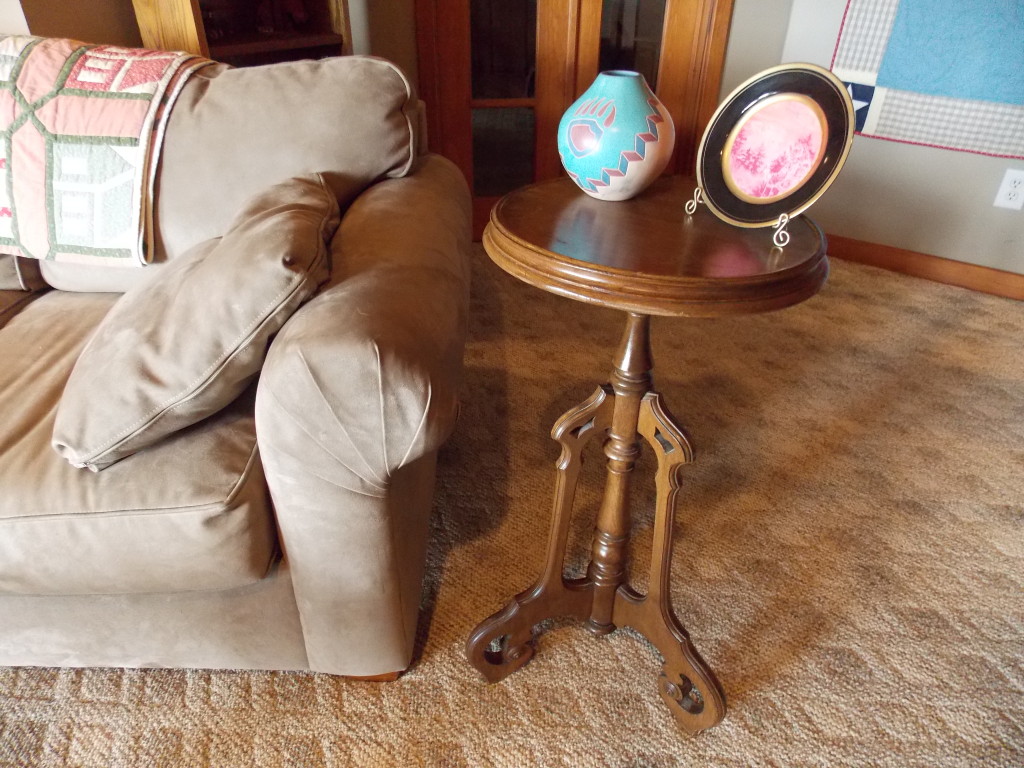
Since Minwax® Wipe-On Poly dries in 2-3 hours, it wasn’t long before I could bring my plant stand into the house and start looking for a place to display it. What had earlier been a flea market castoff now has a fresh, hand-rubbed finish that really brings out the beauty of the walnut grain.
Until next time,
Thanks for stopping by!
Bruce
PS – Be sure to check out the Minwax® Facebook page for even more tips on wood staining and finishing!




I just applied Minwax poly shade in classic black satin to a dining table top. I just realized we eat at this table several times a day, will I need to protect it from hot plates and sweating glasses or does the poly protect from most of those things?
The polyurethane contained in PolyShades will protect it against standing water, provided it is not left on for several hours. Excessive heat, however, can damage any finish, so I always use placemats and trivets just to make sure that all our work is not damaged by a scorching hot dish. Hope this helps and thanks for reading, Heather! -Bruce